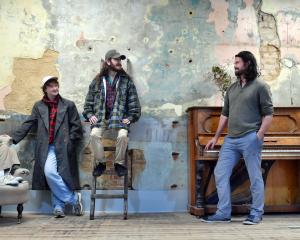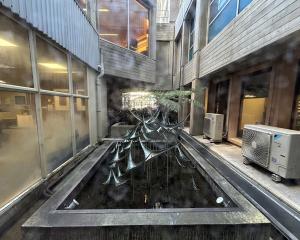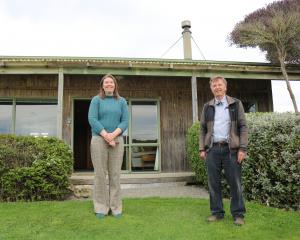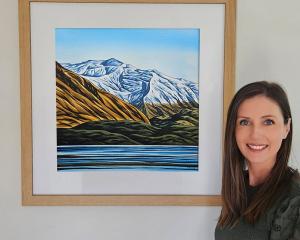Sometimes art is more than art.
For Mahiriki Tangaroa, it is the last bastion in a nation's fight to defend its cultural identity.
Tangaroa exhibits regularly in New Zealand and Rarotonga and will hold her first exhibition in Dunedin, "Mangoes in the Morning", at Gallery De Novo this week.
"'Mangoes in the Morning' metaphorically refers to the critical importance of maintaining traditional customary practices," she says.
"To revive an acknowledgement of our history and return to our customary practices - that's what I'm trying to achieve.
The title also alludes to an impressionable small island nation challenged by the pressures of globalisation and the questionable bid to accept change at the expense of relinquishing indigenous rite."
Tangaroa uses the islands' gods as a metaphor for their cultural erosion.
"I started looking at traditional gods four years ago. When I first went there in '95, there was nothing in the museum about those old gods.
"It was like they had never existed," she says.
"The arrival of Christianity in the islands in 1821 had a big impact on our traditional gods. They were burned by the missionaries, with the approval of the locals.
"There's a large population of Christians in the Cook Islands. But my work seems to have touched on something they would prefer to have forgotten.
"The dismembered and distorted images of the gods represent the erosion of traditional beliefs," she says.
"We produce all these tikis for the tourism market - little tikis, medium tikis and big tikis. This is a god we once worshipped now being subject to commercial exploitation.
"Many artists there produce for the tourism market, rather than expressing themselves. There is a social pressure to adapt to Western ways. But we don't really have to.
"A lot of people now shop in the supermarket rather than growing their food in a plantation. But how does that affect our relationship to the land and how does it change us as people?
"I like to address and challenge aspects of island culture from the social, religious and political landscape. It is these underlying forces that inevitably establish the social values in Cook Islands society today."
Tangaroa was born in Auckland and moved to Christchurch with her family when she was 2.
She emigrated to Rarotonga 10 years ago, when she was 24.
"Having lived a Western life and then going to the islands, I really appreciated what they have there. Yet they want what we have here."
Rarotonga has a population of around 9000, while the Cook Islands totals 18,000"Over the last 12 years, the Cook Islands have suffered the effects of depopulation, which has not only affected the continuity of traditional practices but has created a forum for increased foreign settlement," Tangaroa says.
"A lot of Cook Islanders are leaving to come to New Zealand and Australia."
Tangaroa (34) graduated from the University of Canterbury with a bachelor of fine arts degree in 1997 and returned to the Cook Islands, her parents' homeland, in 1998.
"Rarotonga is a great place to paint. The light there is very bright and you've got a lot of time on your hands.
"They operate on `island time', which means, basically, you get around to doing something when you get around to doing it," she says.
"It is quite volatile politically, too. We had three prime ministers in one year about five years ago."
In 2000, she was appointed curator and director of the Cook Islands National Museum, during which time she established the Creative New Zealand Artist In Residence programme.
The programme has enriched the local arts community by facilitating contemporary art exchange and development between local artists and visiting Pacific artists.
"There's no art school there and art education discontinues at seventh-form level," Tangaroa says.
"An artist visiting from New Zealand gives a breath of fresh air and it gives continuity. It also provides a diversity of mediums. It's an exchange between Pacific artists.
"This has been a really great thing for the art community in the Cook Islands."
In 2003, she curated the first international Cook Islands Contemporary Art Exhibition, "Te Ata Ou", for the fifth Pacific Arts Association Symposium in Christchurch.
Last year, she staged a major solo show at Beachcomber Gallery, "In Due Course", and has recently been appointed art director of Beachcomber Gallery in Rarotonga.
See it
"Mangoes in the Morning" by Mahiriki Tangaroa opens at Gallery De Novo tomorrow and runs until June 6. The artist will attend the 5.30pm opening tomorrow.












